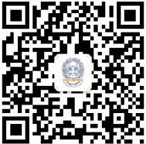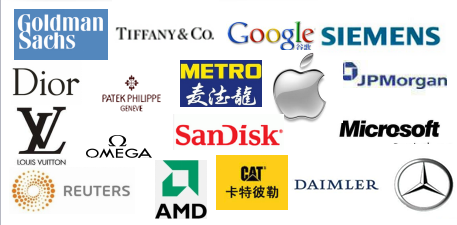
Employee health and safety protection management system
Published May 15, 2024 Implemented on May 15 2024
Beijing RiskControl Co., Ltd. | Document Number: | GXLN-CSR-WI-07 |
Employee health and safety protection management system | Version Number: | 1.0 |
Health and Safety Management System
1. Purpose
To ensure the health and safety of employees, prevent occupational diseases and work-related injuries, and improve both employee satisfaction and the company’s social image.
2. Scope
This system applies to all employees of the company, including full-time, part-time, and contract workers.
3. Responsibilities and Organization
· Safety Management Committee: Composed of senior management, responsible for formulating, reviewing, and supervising the implementation of the health and safety protection management system.
· Health and Safety Management Department: Responsible for the day-to-day management of health and safety, including the development of safety operation procedures, organizing safety training, etc.
· Employees: Each employee is responsible for following safety operation procedures, using safety equipment properly, participating in safety training, and reporting safety hazards in a timely manner.
4. Safe Working Environment
4.1 Physical Environment Safety
· Workplace Design: Ensure that the workplace design complies with safety standards, including adequate space, proper lighting, and ventilation.
· Safety Signage: Set up prominent safety signs in the workplace to remind employees to pay attention to safety.
· Environmental Cleanliness: Maintain a clean working environment and regularly clear obstacles that may cause slips or trips.
4.2 Work Pressure and Mental Health
· Stress Management Program: Develop and implement a work pressure management program, including regular stress management training and relaxation techniques.
· Mental Health Days: Establish dedicated mental health days to provide counseling services and activities to raise awareness of mental health among employees.
· Health Promotion Activities: Organize health promotion activities, such as sports events, team-building activities, etc., to reduce work stress.
4.3 Prevention of Repetitive Strain Injuries
· Workstation Assessment: Conduct ergonomic assessments of all workstations to ensure employees are using correct working postures.
· Equipment Adjustment: Adjust equipment such as chairs, keyboards, and monitors according to the employee’s height and working habits.
· Rest and Exercise: Encourage employees to take regular breaks during work and provide simple exercise guidance to reduce stress from repetitive motions.
4.4 Emergency Facilities and Escape Routes
· Emergency Equipment: Ensure that all emergency equipment, such as fire extinguishers and first-aid kits, are complete and regularly checked.
· Clear Escape Routes: Clearly mark escape routes in the workplace and ensure that escape passages are unobstructed.
4.5 Noise and Light Pollution Control
· Noise Control: Take measures to reduce workplace noise, such as using quiet equipment and setting up soundproof barriers.
· Light Pollution Control: Ensure appropriate lighting in the workplace to reduce light pollution, such as using anti-glare screens.
5. Health Protection Measures
5.1 Occupational Disease Prevention and Treatment
· Regular Health Check-ups: Provide regular health check-ups for employees, especially for those who may be exposed to occupational disease risks.
· Occupational Disease Education: Regularly hold lectures on the prevention and treatment of occupational diseases to raise employees' awareness and self-protection.
5.2 Personal Protective Equipment (PPE)
· Provision of Protective Equipment: Provide necessary personal protective equipment (PPE) such as helmets, goggles, and protective clothing according to the working environment and task requirements.
· Correct Use Training: Regularly train employees on the correct use and maintenance of PPE to ensure it provides the necessary protection.
5.3 Work Stress and Mental Health
· Stress Management Training: Provide training on stress management and mental health, teaching employees how to recognize and cope with work-related stress.
· Mental Health Support: Establish a mental health support system, including professional counseling services and mental health day activities.
5.4 Prevention of Repetitive Strain Injuries
· Ergonomics Training: Provide ergonomics training to employees, teaching them correct working postures and habits to reduce the risk of repetitive strain injuries.
· Workstation Adjustments: Adjust the layout and equipment of workstations according to employees’ physical characteristics to accommodate individual differences.
6. Emergency Response and Accident Management
6.1 Emergency Plans
· Plan Formulation: Develop comprehensive emergency plans for potential emergency situations such as fires, earthquakes, and violent incidents.
· Emergency Roles: Define roles and responsibilities during an emergency, such as emergency team leader, safety officer, medical assistance, etc.
· Emergency Routes and Assembly Points: Identify safe escape routes and assembly points, and ensure all employees are familiar with these details.
6.2 Emergency Equipment and Facilities
· Emergency Equipment: Ensure that necessary emergency equipment, such as fire extinguishers, first-aid kits, and emergency lighting, are in good condition and easily accessible.
· Regular Checks: Conduct regular checks on the condition of emergency equipment and facilities to ensure their proper functionality in an emergency.
6.3 Emergency Training and Drills
· Emergency Training: Provide emergency training to all employees, including how to use firefighting equipment, perform basic first aid, etc.
· Regular Drills: Conduct regular emergency drills to improve employees' emergency response capabilities and proficiency.
6.4 Accident Handling
· Quick Response: Ensure a quick response in the event of an accident by promptly activating emergency plans to minimize injury and damage.
· Accident Investigation: Conduct an immediate investigation after an accident to determine the cause and prevent similar incidents from occurring in the future.
· Accident Record: Keep detailed records of the accident process, response actions, and results, to provide references for future safety management.
6.5 Post-Accident Evaluation and Improvement
· Accident Evaluation: Evaluate the handling of each accident, analyzing the effectiveness of the emergency plans and employees’ responses.
· Improvement Measures: Based on the accident evaluation results, propose improvement measures and revise and update emergency plans.
7. Health and Safety Supervision and Assessment
· Regular Inspections: The Health and Safety Management Department should regularly inspect the workplace for safety.
· Safety Performance Assessment: Incorporate health and safety performance into the employee assessment system, rewarding employees or departments with good safety performance.
8. Safety Training and Education
· New Employee Safety Training: All new employees must undergo safety education and training to understand the company's safety policies and operating procedures.
· Regular Safety Training: Organize regular safety training sessions to enhance employees’ safety awareness and emergency handling capabilities.
 简体中文
简体中文 English
English

